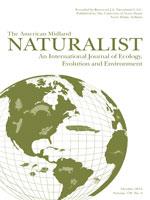In this study, we assessed growth response of Quercus buckleyi (Texas red oak), a current codominant deciduous oak species in central Texas woodlands, to changes in competition, fire, and climate over time to evaluate factors related to documented regional decline of this species. For this analysis, we collected 372 tree slabs of Texas red oaks from the woodlands of the Balcones Canyonlands National Wildlife Refuge near Austin, Texas, from which we aged fire scars and measured tree-ring widths to calculate basal area increment and ring-width indices. To determine canopy conditions of these trees over time, we used historical aerial photos from 1937 to 2004 acquired approximately every 15 y to evaluate changes in woody vegetation cover for the locations of the trees sampled. Our results showed that trees affected by loss of local woody vegetation cover, as evaluated by the aerial photographs, and fire had higher average basal area increment than trees without fire evidence and loss of cover. These differences were significant when aspect and slope were added to the analysis. For climate, we found significant correlation between annual Palmer Drought Severity Indices and ring-width indices for the time interval of 1937–1978, but not after, indicative of potential recent decoupling between tree-ring changes and climate. We found drought to potentially be a major driver of community change in this system as it affects tree-ring response, fire, and mortality assessed from sampled trees.
How to translate text using browser tools
1 October 2013
Loss of Neighbors, Fire, and Climate Effects on Texas Red Oak Growth in a Juniper-dominated Woodland Ecosystem
Darrel B. Murray,
Joseph D. White
ACCESS THE FULL ARTICLE
It is not available for individual sale.
This article is only available to subscribers.
It is not available for individual sale.
It is not available for individual sale.





